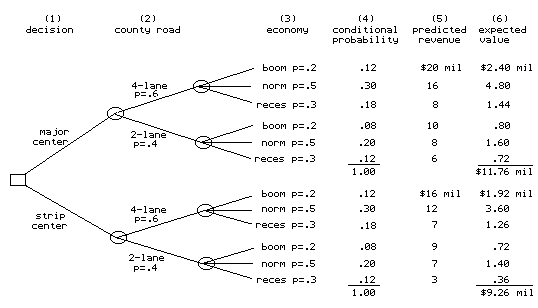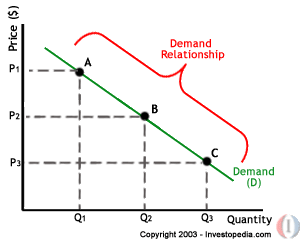Strategic management is concerned with the fundamental direction of the organization's activity, i.e., the businesses that the organization intends to pursue and desired levels of achievement in those lines of business. Such decisions, by their very natures, must be made at the highest policy making level of the organization. The time frame is from the present to as far into the future as the organization's time horizon. The organization's time horizon is limited to that of its least visionary policy maker who constrains the enthusiasm of its would-be innovators.
By virtue of the fact that such directional decision making covers the long run and is laden with risk, it should be understood to be entrepreneurial rather than managerial in nature. Although the language of the business administration literature stresses strategic management, it should be more properly understood to be stragetic entrepreneurship. In the late twentieth century, the term "
entrepreneurship" has come to be associated with new, small, "start-up" business ventures that are highly risky. Entrepreneurship often is not perceived to occur in established or "going" concerns, especially if they have attained large size in terms of assets, employment, market share, or volume of sales.
Strategic entrepreneurship may occur at any level in any organization, whether a new local venture or a well-established multinational enterprise. In a new venture, entrepreneurship is exercised by the founder of the firm. To the extent that fundamental change is initiated at the board room level of an established enterprise, the function of the governing board is almost purely entrepreneurial since the board must assume the risks of its innovational decisions. If proposals for change are devised at lower levels in the administrative organization and only submitted to the governing board for approval, it is the site of the innovative proposal that is the true locus of entrepreneurship. However, in its approval the governing board assumes a substantial portion of the risk of the proposed innovation, and in effect shares risk with the proposer of the strategic change.
There is some confusion over the meanings of the terms "goals" and "objectives." We shall take the term goal to refer to an ultimate end that the organization at its highest policy making level determines to try to achieve. The term objective is taken to refer to desirable intermediate situations or levels of performance to be achieved in pursuit of the ultimate goals of the organization. By their nature then, goals are long-term and strategic in orientation, whereas objectives are more short-term, immediate, and partial in nature.
In military parlance, the term "tactic" is usually juxtaposed to "strategy" in referring to an action that is taken "in the field" by a specific unit to accomplish a limited objective in pursuit of a strategic goal of the organization. The term "tactic" and its various derivative forms are rarely used in discussions of strategic management. However, decisions taken at various levels in the administrative organization to implement an approved strategic change are oriented toward specific objectives (such as a target volume of sales or share of the market) rather than ultimate goals (such as a required return on investment in a particular line of business), and are thus essentially tactical in nature. In a new venture, goals and objectives may coincide, and strategic and tactical decision making may converge in the mind of the founding entrepreneur.
In the established enterprise, tactical decision making at various administrative levels must confront choices that involve risks. A modicum of entrepreneurship may therefore be exercised by the mid-level manager in the tactical decisions that must be made. However, tactical decisions that involve simply deciding upon increases or decreases in activities already in progress belong to the realm of managerial decision making. It is possible that nearly all of the decisions that must be made in a new business venture are strategic and entrepreneurial rather than tactical and managerial.
A prime example of strategic decision making is found in the international business arena. It is not uncommon for corporations to engage in international transactions or operations, but proprietorships and partnerships may do so as well. By its very nature, much of the business decision making concerning the international realm is entrepreneurial because of the inherent risks attendant upon extending operations into other countries. But once international operations have become established, tactical managerial decision making is required to adjust levels and rates of operations.
The Nature of the Decision ProblemManagers may make a myriad of decisions every day. Some of the decisions are trivial in the sense that the consequences of them do not matter very much. The consequences of other decisions, for example, what employee health insurance plan to adopt or whether to add or drop a product line from the company's product mix, may be monumental.
We shall assume as an operating premise that human beings are basically interested in their own welfare. Rational human behavior consists of trying to maximize the value of some positive quantity, or to minimize the value of something perceived as having negative connotations. Although human nature is culturally influenced, we shall also presume that human beings are more-or-less materialistic, i.e., more is better than less, and hedonistic, i.e., that pain and displeasure are to be avoided or minimized. We consider in Chapter A2 whether these behavior premises truly are viable foundations upon which to erect models of managerial decision making.
Human approaches to decisions may be categorized as capriciousness, conditioned response, and deliberate, reasoned choice. The more trivial the consequences of the decision, the less time and effort are devoted to the decision process. Sometimes people seem to act without engaging in any apparent decision-making process. The choices underlying such actions may have been nearly automatic, based upon an implicit summing-up of the current circumstance compared with the decision maker's accumulated stock of past experiences under similar circumstances. Occasionally, however, human beings indulge themselves in a capricious action (an act without deliberate choice), even when the consequences may be non-trivial. If a capricious action constitutes a "bad" decision, the actor must suffer the consequences.
Dimensions of the Decision ProblemMultiple Goals. The decision maker may be confronted with a multiplicity of goals. Since it is technically not possible to try to maximize simultaneously the values of multiple conflicting goals, the decision maker has to choose one of the goals for primary pursuit. The other goals, expressed as minimum or maximum acceptable values, can then be regarded as constraints on the pursuit of the primary goal. The object of the decision is to maximize the value of the primary goal, subject to realization of satisfactory levels of subordinate goals. The mathematical modeling problems and possibilities with respect to multiple goals are elaborated in Chapter B2.
Multiple Strategies. With respect to any single goal, a decision involves multiple possible courses of action, or strategies. If there were no alternatives, no decision would be required other than selecting the goal for pursuit. The deliberate approach to decision making involves the identification of all possible courses of action and the benefits and costs likely to result from each of the alternatives. The rational choice is the alternative that yields the greatest relative positives or the largest sum of net benefits (positives less negatives), given the decision maker's set of preferences.
Marginal Changes. In many cases, the choices are not mutually-exclusive alternative courses of action; rather they involve more or less of the same course of action. The range of possible alternatives includes larger or smaller quantities to be selected. Typically, the decision problem is to select some quantity that is an alternative to the present one. Assuming that the alternative quantities are arrayed from smallest to largest, or vice-versa, choosing to shift from one to another involves additions to or subtractions from benefits or costs. Economists speak of such additions and subtractions as incremental changes, or marginal changes if they are the smallest possible changes that can be made. The rational choice in such cases is to make a quantitative change that will yield the greatest marginal benefit relative to marginal cost. The application of the calculus to marginal analysis is the subject of Chapter B2.
Multiple Outcomes. Often the possible alternative courses of action can be identified, but each decision alternative may have several outcome possibilities. If the decision maker can in some meaningful sense assess the probability, p, of the occurrence of each possible outcome, V, for each of the alternative courses of action, he may then compute the expected value of each alternative. The expected value is a probability-weighted average of the possible outcomes for each decision alternative,
(1) EV = p1V1 + p2V2 + ... + pkVk,
or
(1') EV = Sj=1,k (pjVj),
where EV is the expected value of the alternative, p is the probability of the outcome V for each of the k possible outcomes of the alternative. The presumption here is that the sum of the probabilities of the possible outcomes is 1.0. Each outcome may itself be a net difference between benefit (b) and cost (c), or V = b - c. Other things remaining the same, the rational decision then is the choice of the alternative that promises the largest expected value of possible outcomes.
An extension of the expected value concept may be employed in decision situations that unfold in stages such that subsequent stages depend upon what happens in previous stages. In such cases, the probability of occurrence of an ultimate outcome is a conditional probability, i.e., the product of the probabilities of the final outcome and all prior stages. Such a situation can best be visualized with a "decision tree," an example of which is illustrated in Figure A1-1. In this hypothetical situation the decision maker has to decide whether to develop a major shopping center anchored by two department stores, or a small strip shopping center with no department stores. In Figure A1-1, the decision point is represented by the box on the left side of the tree. The circles in the diagram indicate non-decision outcome branches. There is a 60 percent chance that if a major center is built, the county will construct a 4-lane approach road to the center, but a 40 percent chance that the existing 2-lane road will have to do. But if a small strip is constructed, there is only a 20 percent chance of construction of a 4-lane. Beyond the estimated completion of the project, there is a 20 percent chance that the economy will boom, a 50 percent chance of normal economic conditions, and a 30 percent chance of recession.






